Visiting Yuanyang on the Off Season
May 14th, 2015

The night we drove into Yuanyang, the fog was so thick that we couldn’t see the road two yards ahead of us. Our van inched along, turn after blind turn, while we gripped the arms of our seats and leaned toward the windshield, straining to see if there were any headlights coming toward us. The next morning, when we opened the curtains and looked out the window of our hotel, the fog was still there, a white wall between us and the famous rice terraces of Yuanyang, one of the most photographed sights in China.
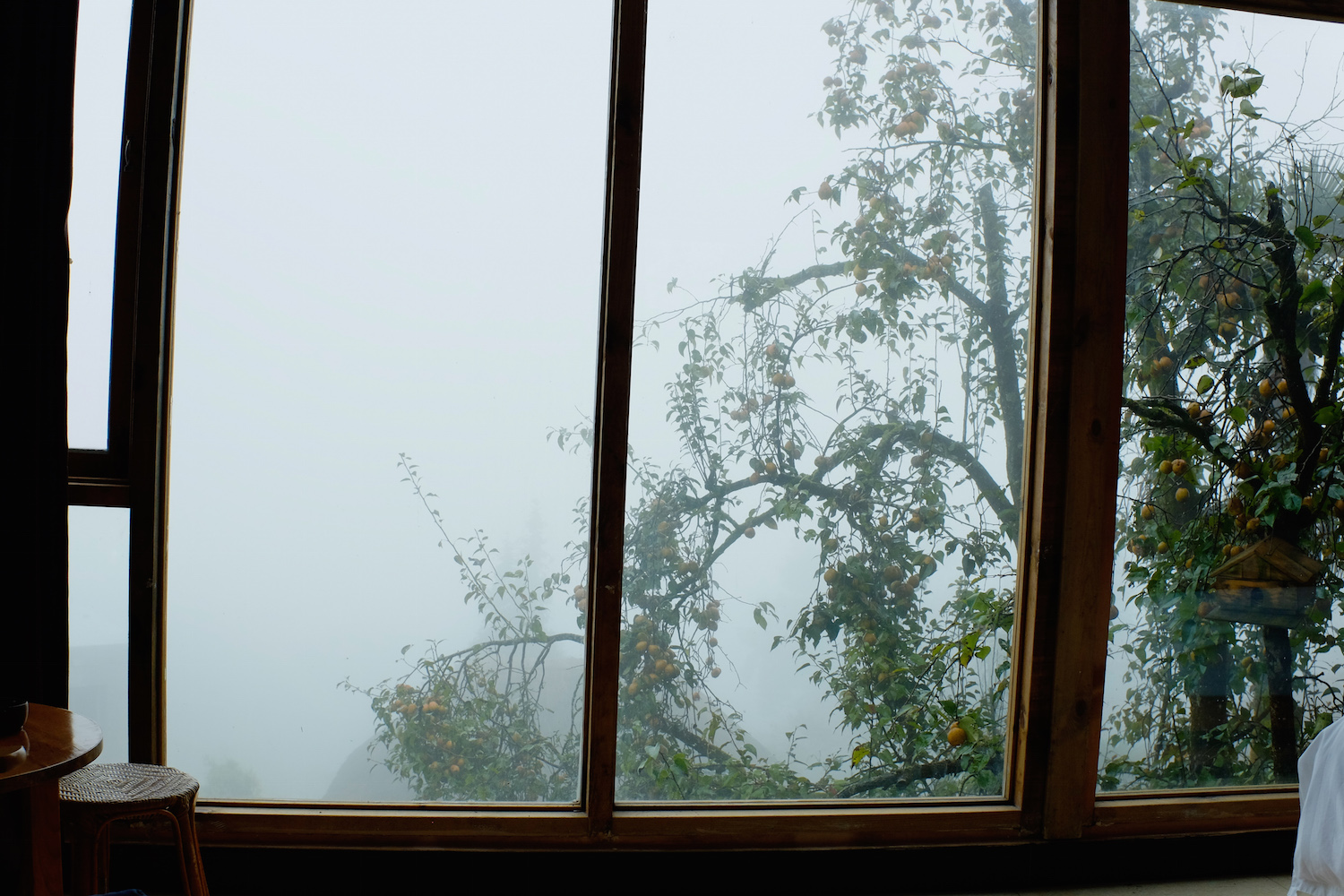
The fog outside our hotel window
We were in Yuanyang to see the Honghe Hani Rice Terraces, a system of tiered rice paddies carved into the mountains by the Hani, a minority who have lived in the region for roughly 1,300 years and engineered a complex system for bringing water down from the tops of the Ailao Mountains to irrigate the rice. The terraces are so vast (and so beautiful) that in 2013 UNESCO designated them as a World Heritage site. In response, the Chinese government did was it does with most famous sites: it built a gate and a visitors’ center blocking the local road, started selling tickets to anyone who wanted to visit the area, and walled off the best views so that only ticket-holders could access them.
Now thousands of Chinese tourists descend on the area every year, crowding into buses so that they can take pictures in front of the most famous views and watch staged Hani folk dances. The national holidays—Chinese New Year, which is usually in February, and National Day, which is celebrated the first week of October—are particularly crowded, with so many visitors that authorities have posted signs at all of the viewing platforms reminding people not to shove. (Based on past experience at busy Chinese tourist spots, I doubt the signs help much.) The most popular time to visit the rice terraces is in the winter, when the paddies are flooded with water, turning the mountainsides into tiers of glittering ponds that reflect the sky. This is when the photographers descend to catch shots of purple and pink sunrises reflected endlessly across the mountains.
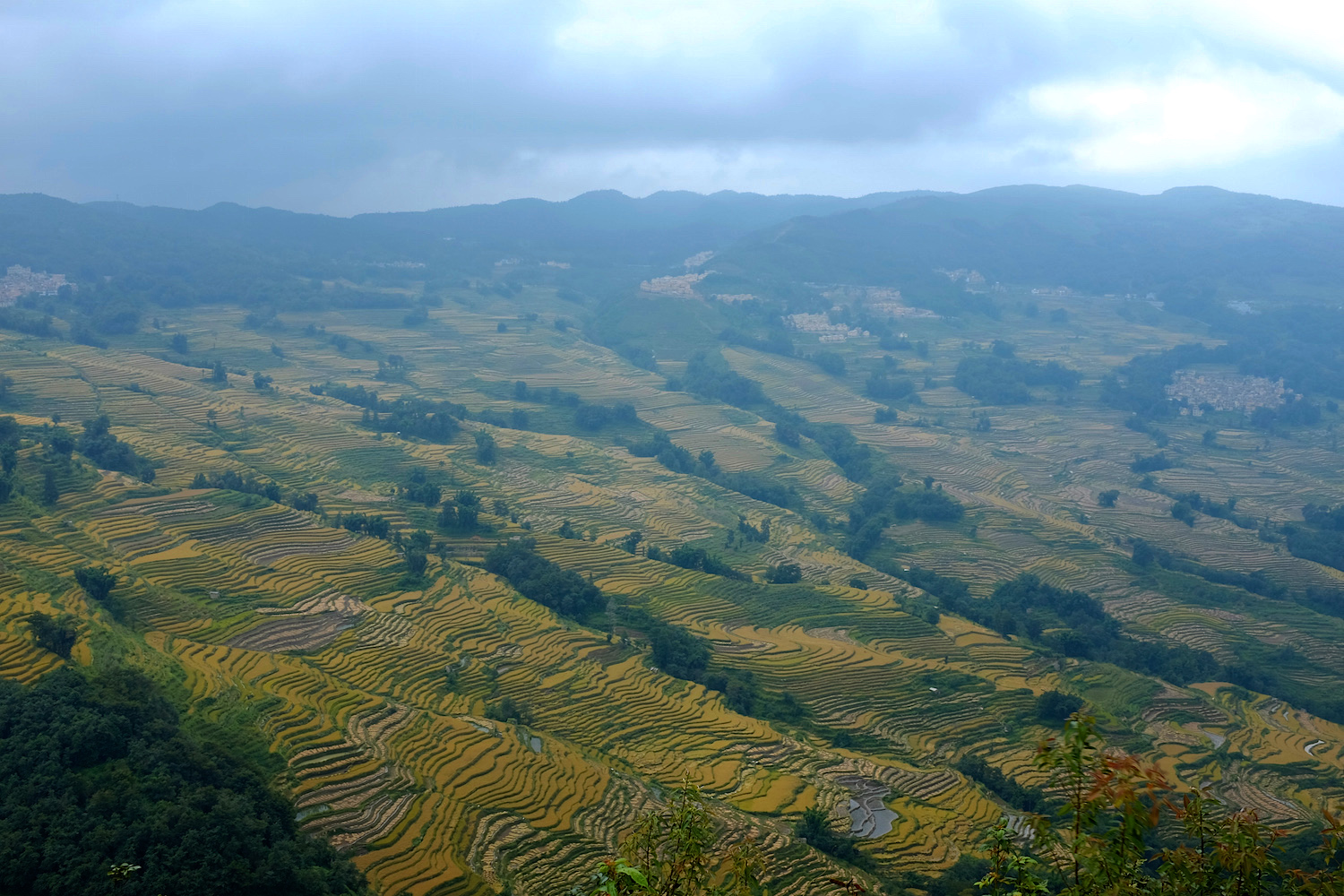
The rice terraces at harvest time
When we visited, however, it was the off-season, and the area was almost completely devoid of tourists. When the fog finally lifted, we had the area to ourselves and could wander through the famous vista spots slowly and sit as long as we liked, admiring the terraces in complete quiet. In many parts of the valley the harvest had started, and as each family’s rice ripened, everyone from the oldest grandparents to the youngest children worked together to cut the stiff stalks and carry them back up the steel hillsides to the villages.

Local women carry building materials down to a construction site in Pugao Laozhai
Those who weren’t harvesting took advantage of the lack of tourists to start construction projects. As the local tourism industry has grown, the number of small guesthouses and hostels has exploded, and new buildings were sprouting up all across the valley.
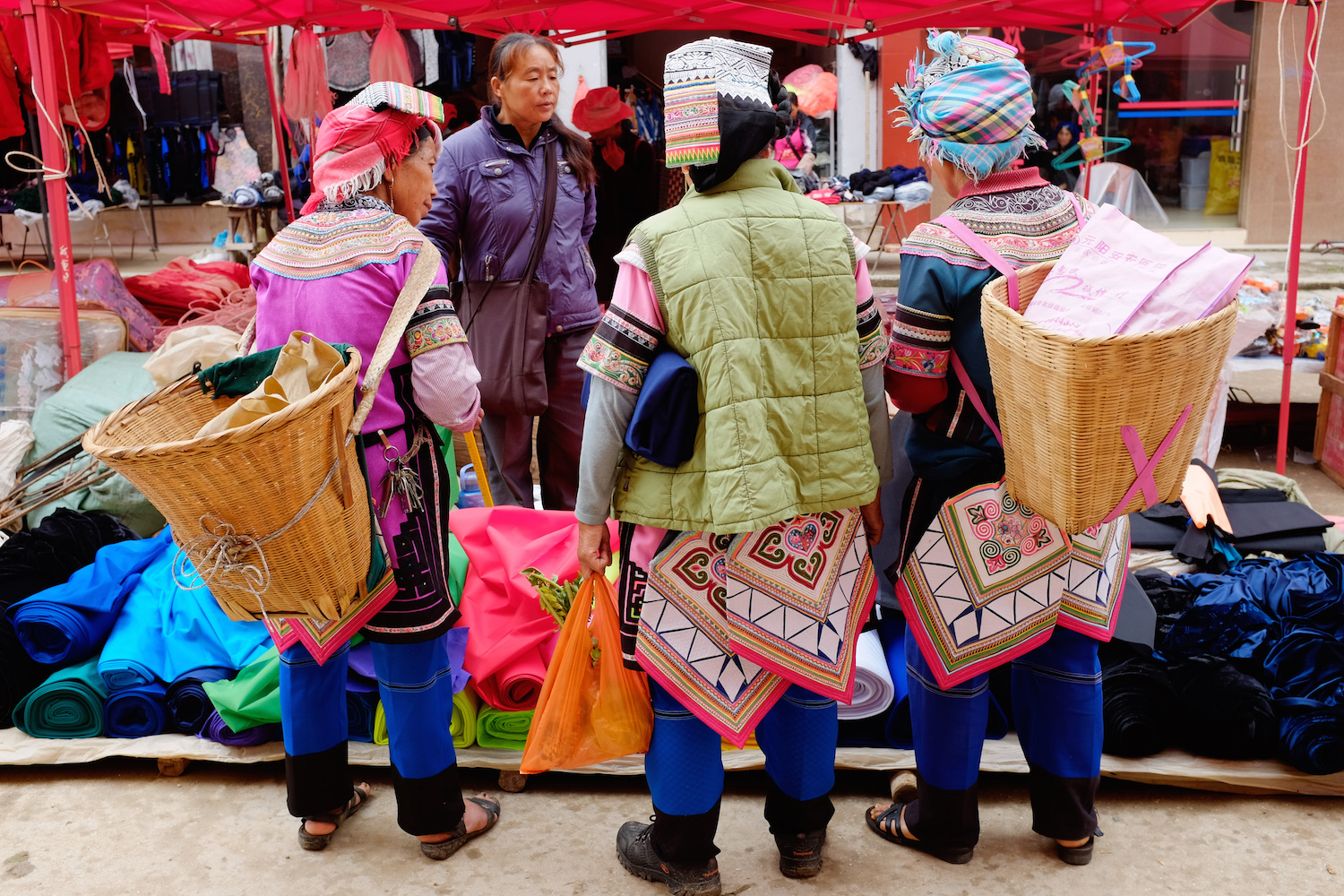
Yi minority women shopping for cloth
Being in Yuanyang on the off season meant that many of the area’s more touristy offerings, like the folk-custom villages where visitors can see local dances, were closed, and the lack of traditional sights and attractions allowed us to slow down and spend some quiet time enjoying being in the countryside. We stayed in Pugao Laozhai, a local village with cobblestone walkways instead of roads that has filled with small hostels and guesthouses catering to foreign backpackers who want to see how the local Hani families live. During the day we wandered through the streets peeking into doorways, made our way to the local market to look at the richly embroidered fabrics that make up the Hani and Yi minority women’s traditional clothing, and popped into restaurants that catered exclusively to a local clientele.
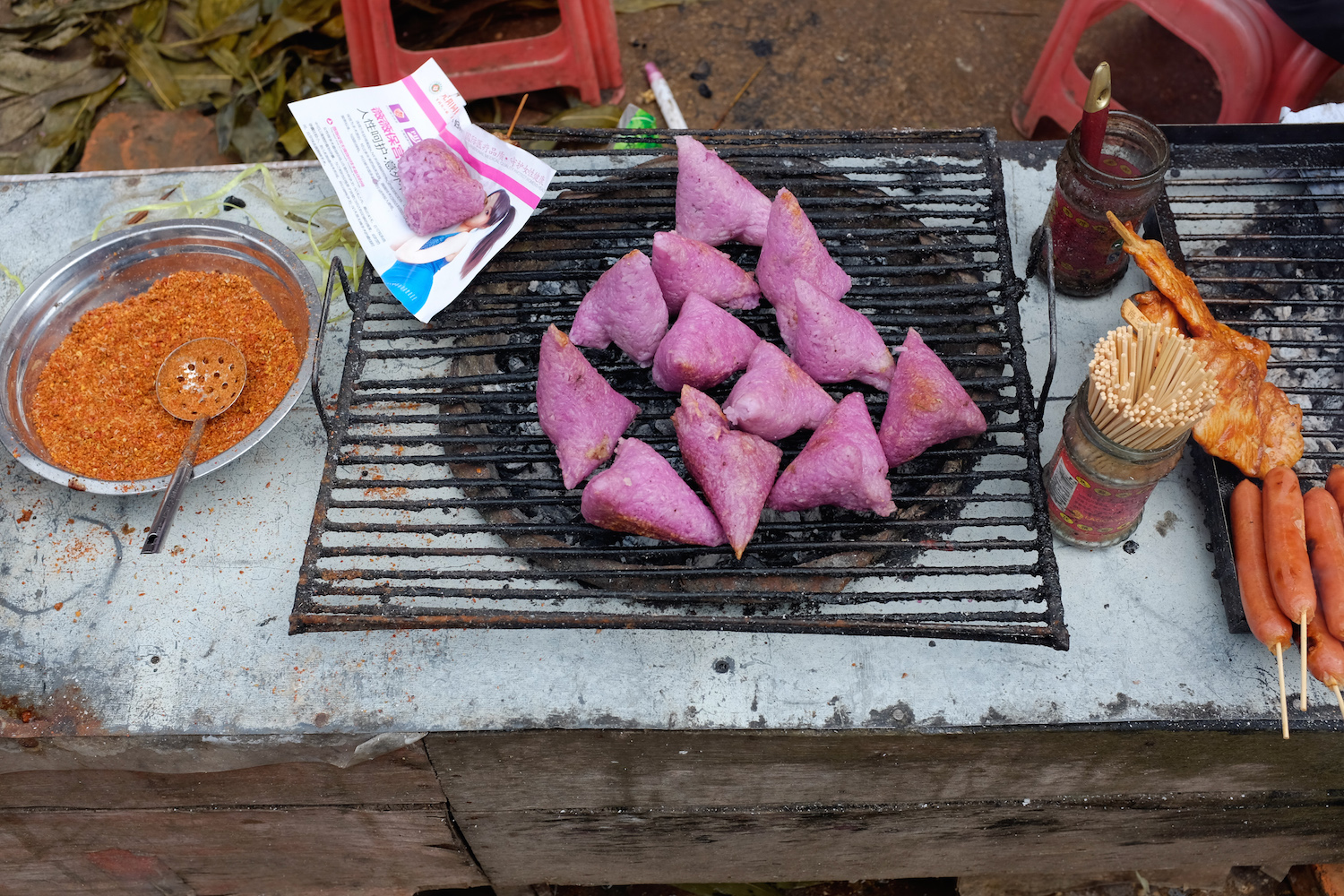
A market-day snack
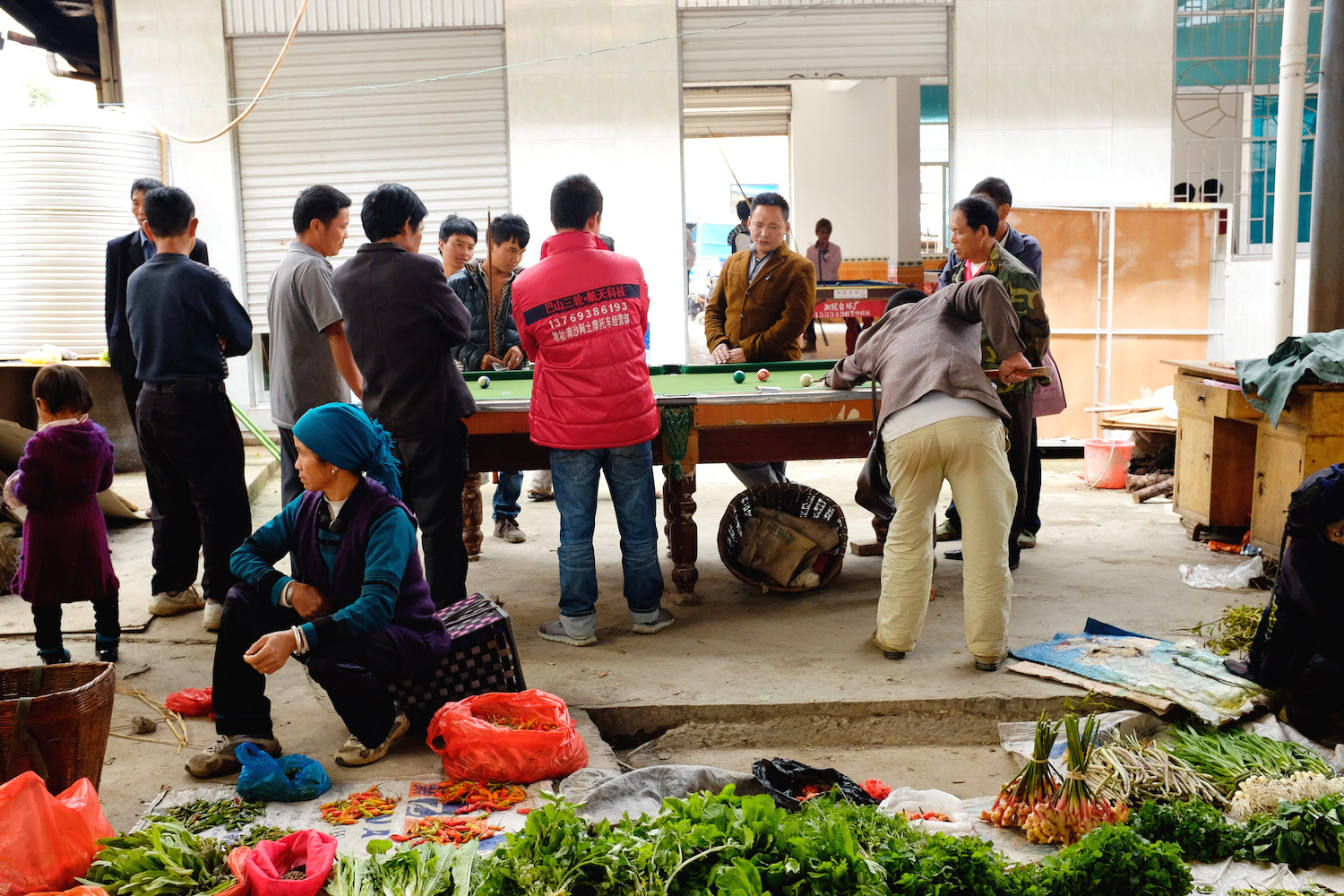
The men relax while the women sell vegetables
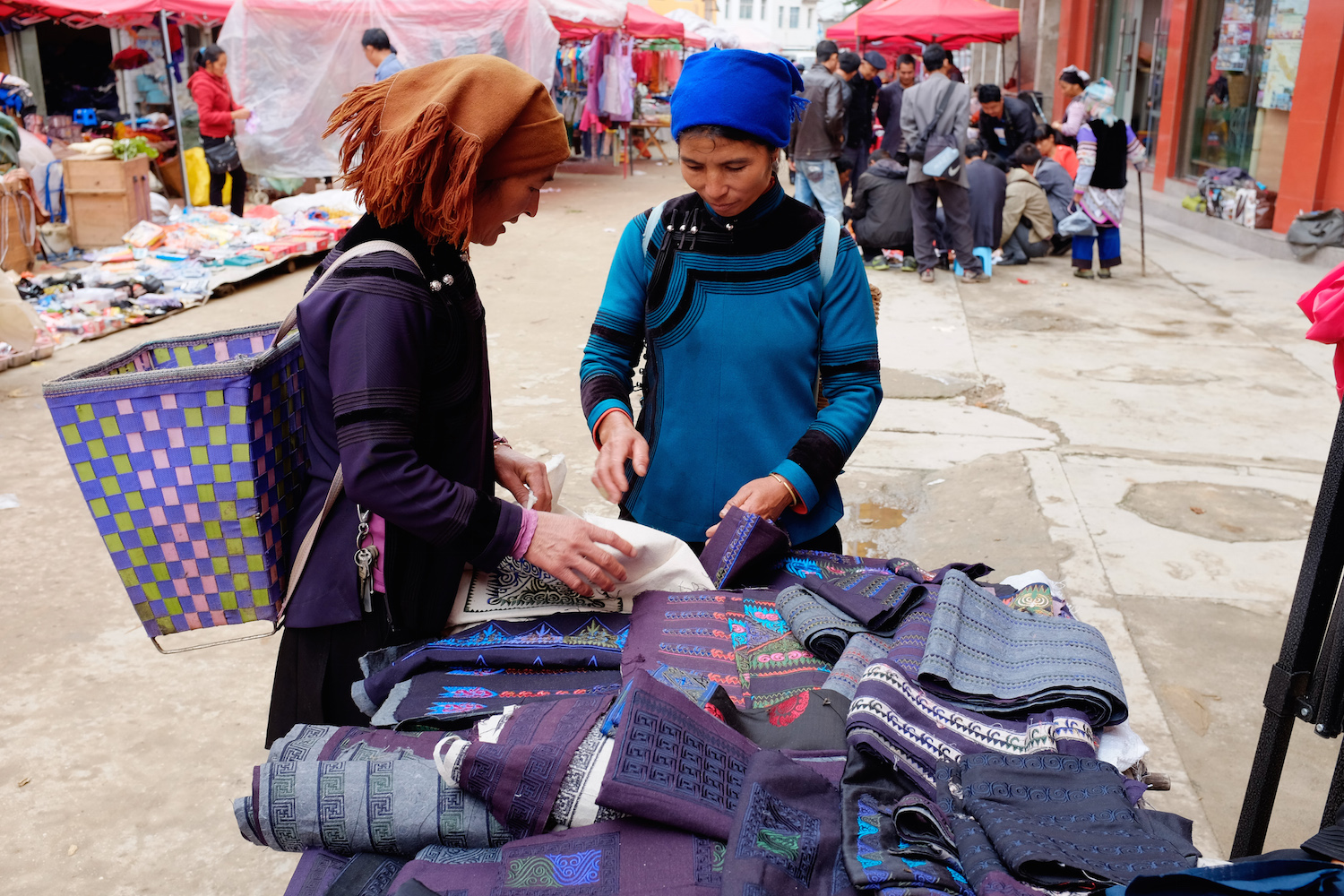
Hani women look at embroidery
One night, we were invited to join a local Hani family for dinner in their traditional thatched-roof house. The home, a type of building called a “mushroom house” because of its shape, was no longer the family’s primary residence (they lived in more modern houses nearby), but the three generations of the Pu family still gathered there most evenings to cook and eat together.
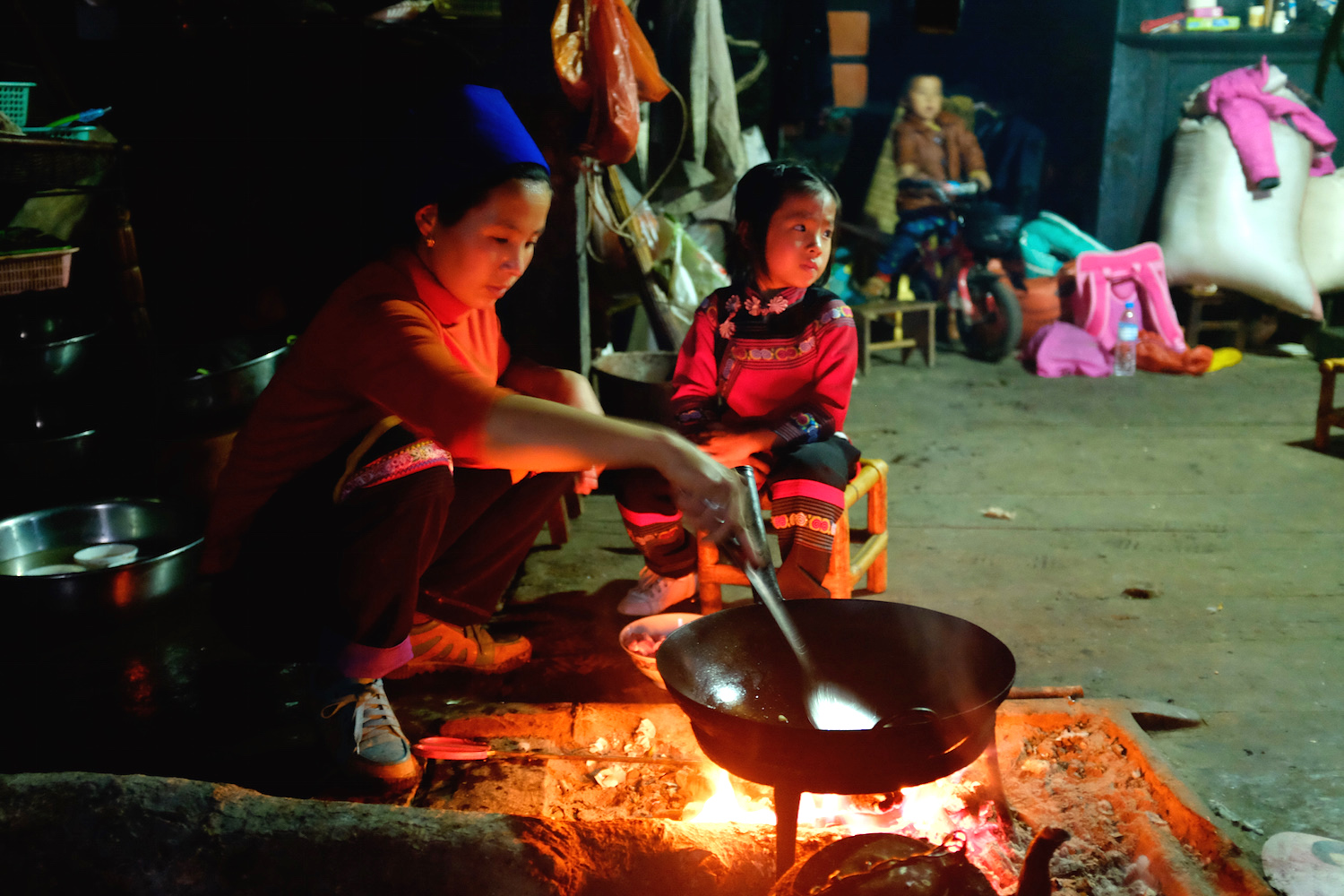
Making dinner in the “mushroom house”
When we arrived, we climbed up a wooden ladder to the living area on the second story of the building, above a pigsty and a room for grain storage. The room was warm and dark, with a floor of wooden planks and dried corn hanging from the rafters. On the far side of the room, a big wok was set into a tiled counter over a wood-fired stove, and above the stove the room’s one small window let in a bit of cool air. On the night we visited, however, the stove was being used to heat leftovers to feed the family’s large black pig, and dinner was prepared on an even more traditional stove—a wok set in a metal ring over a wood fire that glowed in the middle of the floor.
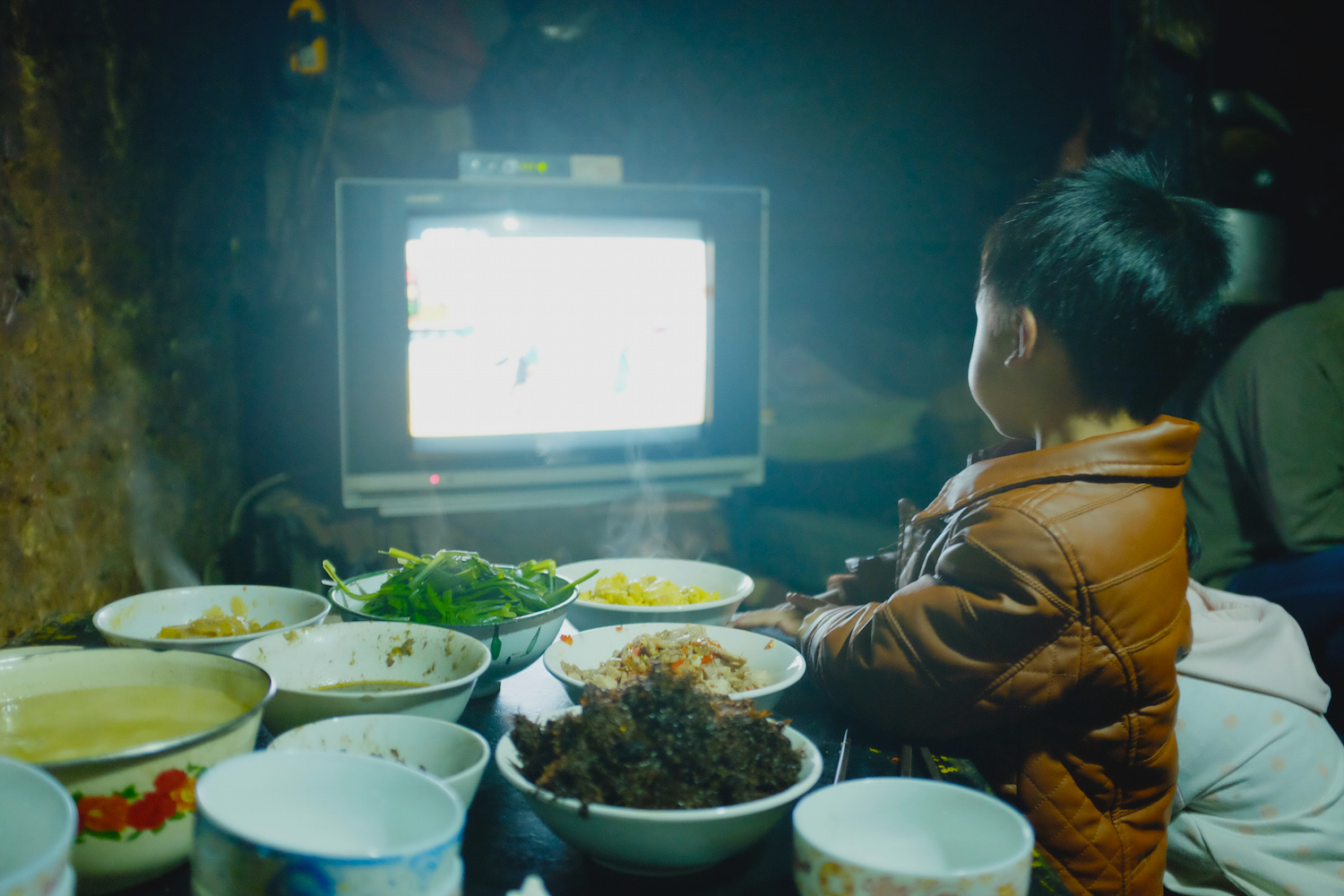
Waiting for dinner
The Pu family was in the middle of their rice harvest, and as everyone trickled in, tired from a day in the terraces, the kids settled themselves in front of the tv to watch Boonie Bears (a cartoon about two bears who thwart an evil logger who wants to cut down their forest), and the women of the family began to prepare dinner. Some of the dishes, like a bowl of soupy garlic chives, had been prepared earlier in the day and just needed to be heated up. Others were made from scratch. There was tofu simmered with water and pork fat, stir-fried bitter melon, simple scrambled eggs, a type of edible moss (stir-fried with pork fat for flavor), a few kinds of dipping sauces to mix with the main dishes, and rice. We had brought the family a large piece of pork to thank them for hosting us, and this was sliced into thin pieces and stir-fried with salted chiles.
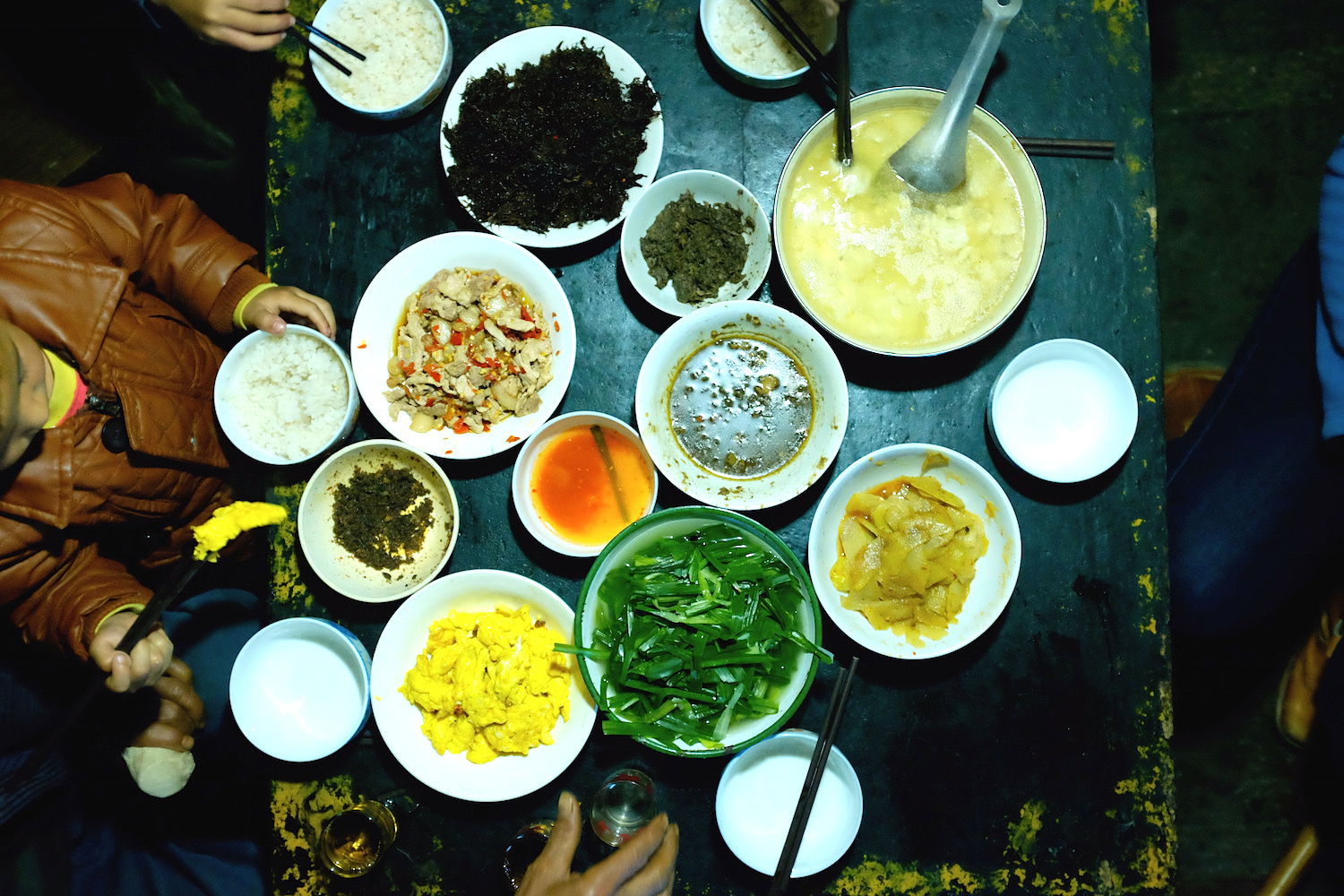
Harvest dinner
When everything was ready, a low table was pulled to the center of the room and we all crowded around. The patriarch of the family, a spry grandfather in his sixties, pulled out a bottle of homemade osmanthus liquor. We toasted the harvest and each other, sipped the sweet, strong golden liquid, and began to eat.

Homemade osmanthus liquor
Photos: Josh Wand (12)



